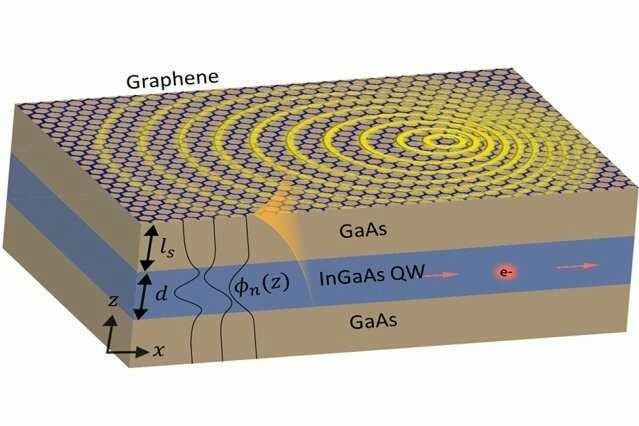New way to make light interact with matter Reducing the wavelength of light could allow it to be absorbed or emitted by a semiconductor, study suggests

The essential standard behind the new approach is an approach to get the force of light particles, called photons, to all the more nearly coordinate that of electrons, which is ordinarily numerous requests of greatness more prominent. In view of the gigantic uniqueness in force, these particles as a rule connect feebly; uniting their momenta empowers substantially more noteworthy control over their cooperations, which could empower new sorts of essential research on these procedures and also a large group of new applications, the specialists say.
The new discoveries, in light of a hypothetical report, are being distributed today in the diary Nature Photonics in a paper by Yaniv Kurman of Technion (the Israel Institute of Technology, in Haifa); MIT graduate understudy Nicholas Rivera; MIT postdoc Thomas Christensen; John Joannopoulos, the Francis Wright Davis Professor of Physics at MIT; Marin Soljacic, educator of material science at MIT; Ido Kaminer, a teacher of material science at Technion and previous MIT postdoc; and Shai Tsesses and Meir Orenstein at Technion.
While silicon is an enormously imperative substance as the reason for most present-day hardware, it isn't appropriate for applications that include light, for example, LEDs and sun oriented cells - despite the fact that it is as of now the essential material utilized for sun powered cells in spite of its low productivity, Kaminer says. Enhancing the connections of light with a vital gadgets material, for example, silicon could be an essential breakthrough toward coordinating photonics - gadgets in view of control of light waves - with electronic semiconductor chips.
A great many people investigating this issue have concentrated on the silicon itself, Kaminer says, however "this approach is altogether different - we're attempting to change the light as opposed to changing the silicon." Kurman includes that "individuals plan the issue in light-matter communications, yet they don't consider outlining the light side."
One approach to do that is by backing off, or contracting, the sufficiently light to radically bring down the force of its individual photons, to get them nearer to that of the electrons. In their hypothetical examination, the analysts demonstrated that light could be impeded by a factor of a thousand by going it through a sort of multilayered thin-film material overlaid with a layer of graphene. The layered material, made of gallium arsenide and indium gallium arsenide layers, changes the conduct of photons going through it in a profoundly controllable manner. This empowers the specialists to control the recurrence of emanations from the material by as much as 20 to 30 percent, says Kurman, who is the paper's lead creator.
The communication of a photon with a couple of oppositely charged particles -, for example, an electron and its relating "opening" - produces a quasiparticle called a plasmon, or a plasmon-polariton, which is a sort of swaying that happens in a fascinating material, for example, the two-dimensional layered gadgets utilized as a part of this exploration. Such materials "bolster flexible motions on its surface, extremely firmly restricted" inside the material, Rivera says. This procedure viably contracts the wavelengths of light by requests of greatness, he says, cutting it down "nearly to the nuclear scale."
Due to that shrinkage, the light would then be able to be consumed by the semiconductor, or transmitted by it, he says. In the graphene-based material, these properties can really be controlled straightforwardly by basically fluctuating a voltage connected to the graphene layer. In that way, "we can absolutely control the properties of the light, not simply quantify it," Kurman says.
In spite of the fact that the work is still at an early and hypothetical stage, the specialists say that on a fundamental level this approach could prompt new sorts of sun powered cells fit for engrossing a more extensive scope of light wavelengths, which would make the gadgets more productive at changing over daylight to power. It could likewise prompt light-creating gadgets, for example, lasers and LEDs, that could be tuned electronically to deliver an extensive variety of hues. "This has a measure of tunability that is past what is as of now accessible," Kaminer says.
"The work is extremely broad," Kurman says, so the outcomes should apply to numerous a larger number of cases than the particular ones utilized as a part of this examination. "We could utilize a few other semiconductor materials, and some other light-matter polaritons." While this work was not finished with silicon, it ought to be conceivable to apply similar standards to silicon-based gadgets, the group says. "By shutting the force hole, we could bring silicon into this world" of plasmon-based gadgets, Kurman says.
Since the discoveries are so new, Rivera says, it "should empower a great deal of usefulness we don't think about yet."
The work was upheld by MIT's MISTI Israel program.